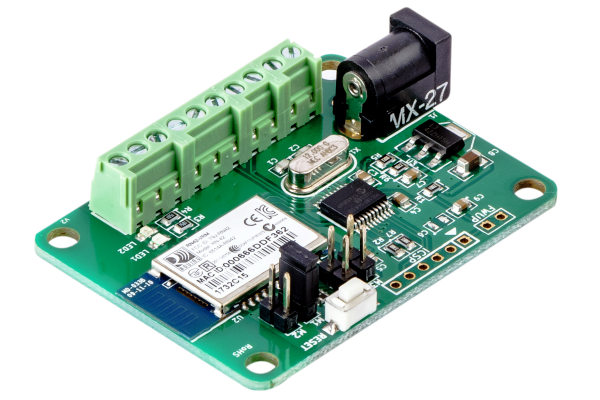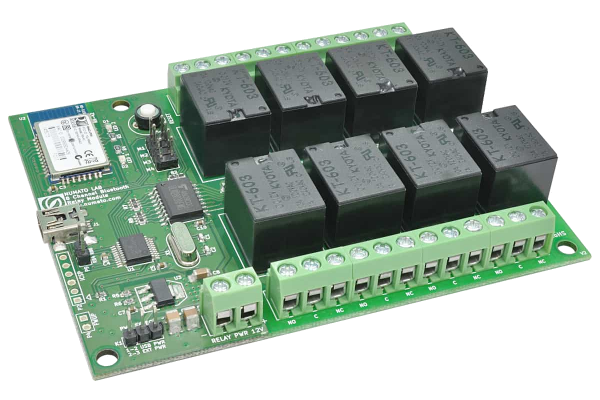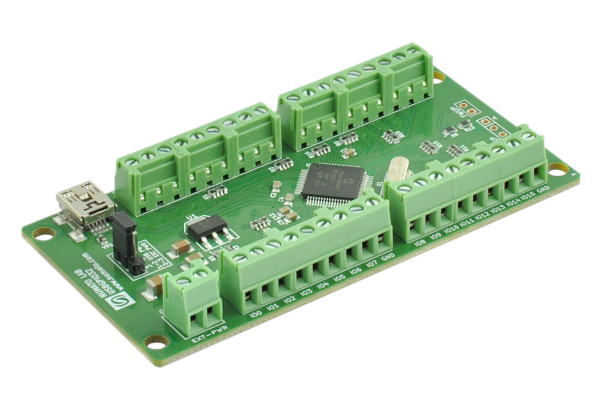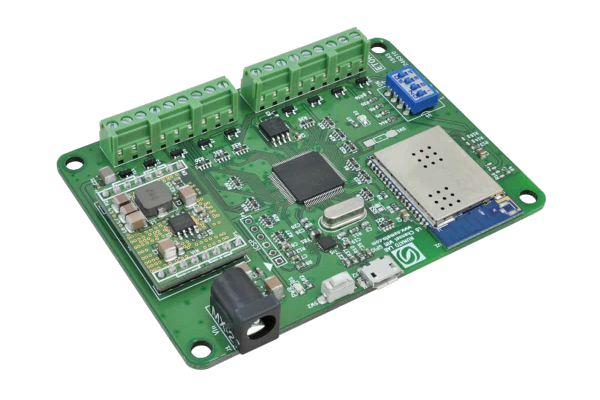Description
For Numato Products Price details/ quotation please mail your requirements on dolphinlabs17@gmail.com
Numato Lab’s 1 Channel USB Solid State Relay Module is great for controlling your devices through USB without any USB protocol knowledge. This module plugs into your design seamlessly. Individual relay can be controlled by simple commands.
This product has one on board Solid State Relay that can switch up to 3A load. The relays and GPIOs can be controlled and read status by simple commands. The board, when attached to a PC/Laptop shows up as a serial port and all you need to control the board is a serial terminal application like HyperTerminal or Putty. This board can easily be controlled by writing a simple serial port application in VC++, VB, VBA (Word, Excel, etc), Perl, Python, etc. The relays are powered from the USB bus so it is important to connect this board directly to a PC or to a powered hub.
Features
- 1 onboard Solid State Relay.
- 3A Maximum Switching Current.
- 4 TTL (3.3V)Compatible GPIOs.
- 4 Analog Input Channels (Multiplexed with GPIOs).
- 10 bits Analog Input Resolution.
- USB interface with CDC support. As easy as using a serial port, no USB knowledge required.
- Solid State Relay contacts available on easy to access screw terminals.
- Can be controlled by using standard serial console applications or custom applications.
- Can be powered from USB or external power supply.
Applications
- Home Automation
- Industrial Automation
- Lighting Control
- Garden Equipment Control
- Test Fixtures
- DIY and Hobby
Supporting operating Systems
- Windows XP
- Windows 7
- Windows 8/8.1
- Windows 10
- Linux
- Mac OS X
- Android
-
Compare
A Vibration Detection System using Arduino, a vibration sensor, and a buzzer that triggers a sound alert when vibrations or movements are detected.
-
Compare
The Conveyor Belt Object Counter using LDR and 7-Segment Display with the 8051 microcontroller is designed to count objects passing in front of an LDR (Light Dependent Resistor) sensor. The system works by detecting light interruptions when an object crosses the sensor, causing a change in the LDR’s resistance. The microcontroller processes this change and increments an object count. The count is then displayed on a 7-segment display.














